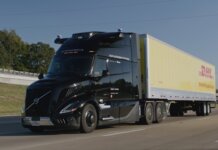The California Air Resources Board (CARB) has extended the reporting deadline for Clean Truck Check, giving heavy-duty truck owners and operators extra time to enter their information into a new database that will track compliance.
Vehicle/fleet owners now have until January 31, 2024, to complete the initial reporting requirement and compliance fee payment for 2023. Vehicle/fleet owners are required to report in the new Clean Truck Check-Vehicle Inspection System (CTC-VIS) reporting database.
The goal of the new Clean Truck Check program, previously known as the Heavy-Duty Inspection and Maintenance (HD I/M) Regulation, is to reduce air pollution in California communities by preventing high-polluting buses or trucks from registering for operation in California and encouraging the rapid repair of malfunctioning emissions control systems.
New reporting requirements aim to increase convenience for fleet operators, making it possible for properly equipped vehicles to submit smog-check results remotely without traveling to a designated testing location.
After registration is completed and annual compliance fees are paid, the next compliance milestone is projected to take place in July. That is when heavy-duty vehicle owners will need to report in CTC-VIS the results of a smog check that ensures that emissions control systems are properly functioning or that they have completed needed repairs.
To determine the applicable compliance deadline, visit the Clean Truck Check program page. The reporting database (CTC-VIS) opened Oct. 1, 2023, and for a vehicle to be considered compliant, owner and vehicle information must be reported and annual compliance fees paid, periodic testing requirements met by the applicable deadline; the Jan. 31 deadline is to ensure compliance for 2023.
Reporting requirements apply to vehicles that exceed 14,000 lbs. gross vehicle weight rating (GVWR) and are powered by diesel or alternative fuels, with rare exception. This includes in-state and out-of-state vehicles that travel within California, as well as public vehicles (federal, state and local); motorcoaches; transit, shuttle and school buses; personal vehicles; California-registered motorhomes; single vehicle fleets; and vehicles registered outside of California (not including motorhomes).
Heavy-duty vehicles contribute most of the on-road nitrogen oxide and particulate matter emissions. When fully implemented, the regulation is projected to cut statewide nitrogen emissions by over 81 tons per day and particulate matter emissions by 0.7 tons per day in 2037.






